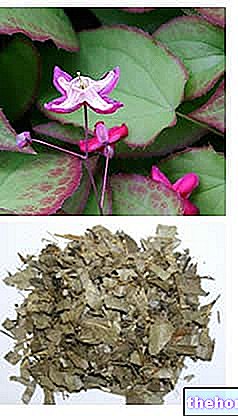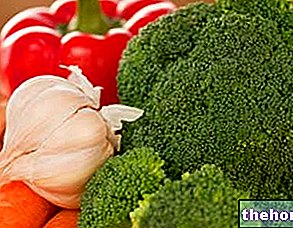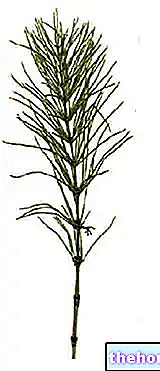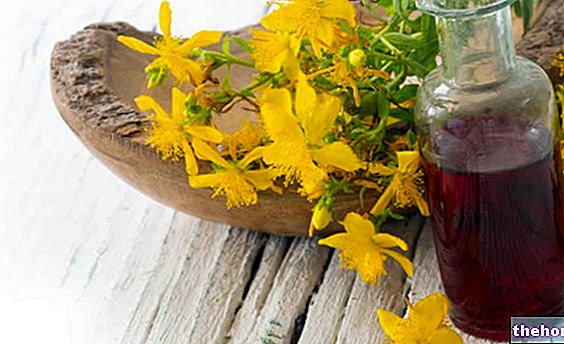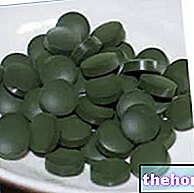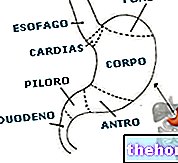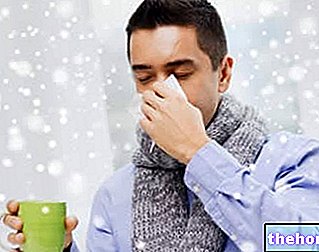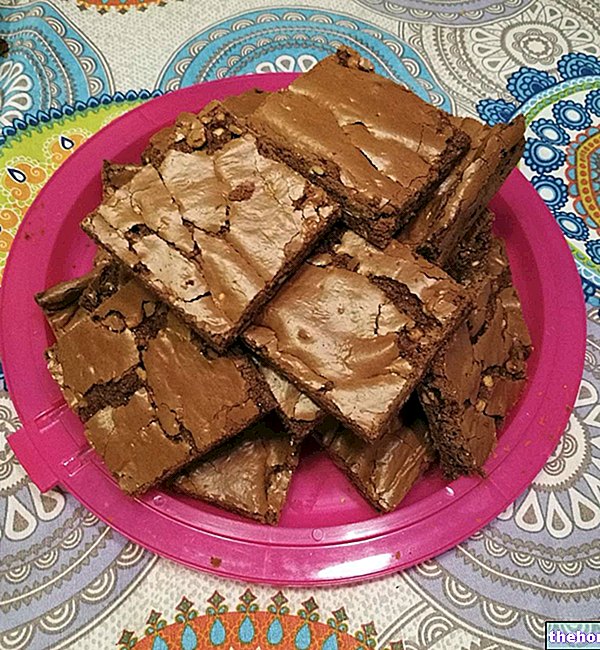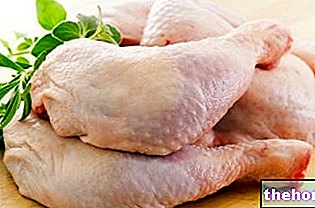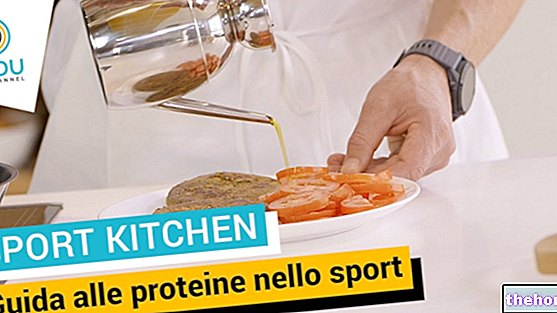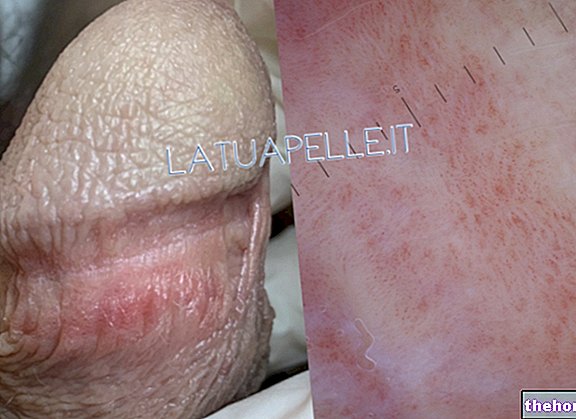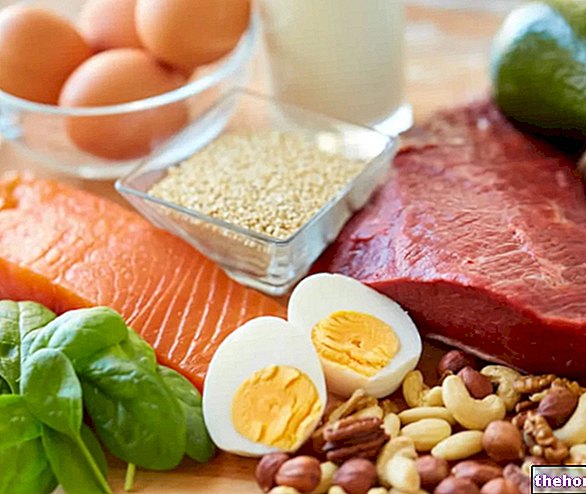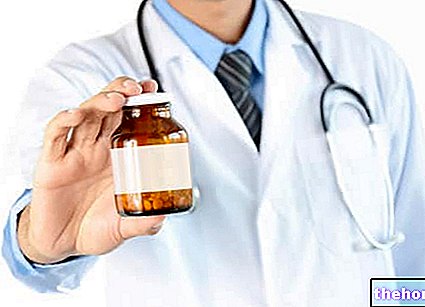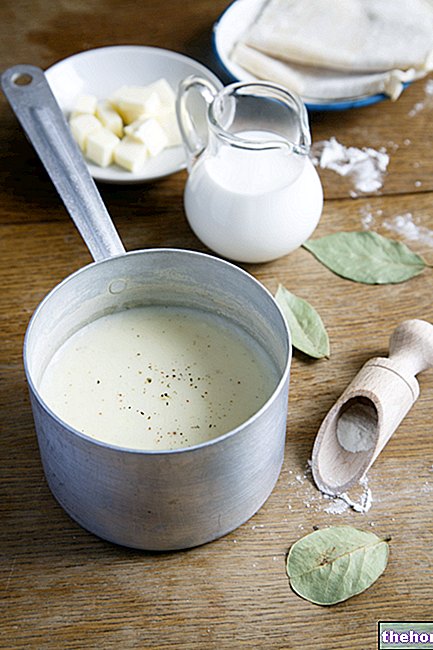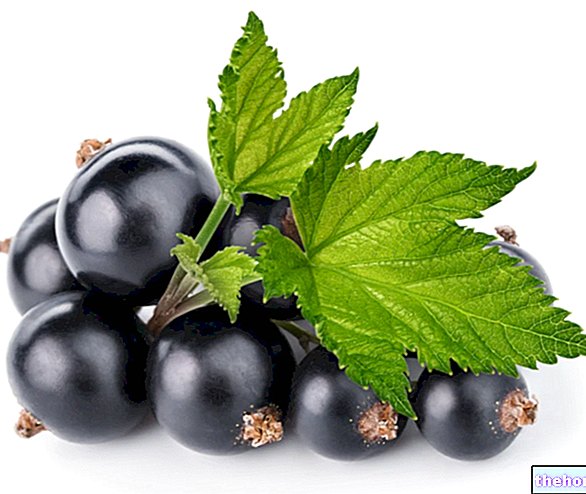The Epimedium - also called Horny Goat Weed (dry goat weed) - is a "medicinal herb that has been used for centuries by traditional Chinese medicine to support reproductive capabilities and the functions of the musculoskeletal system.

In recent years, the Epimedium has reached the headlines for its marked tonic activities, allowing different research groups to characterize its chemical composition and identify the main elements with therapeutic activity.Careful chemical-analytical studies have therefore made it possible to identify:
- Flavonoids;
- Polysaccharides with biological activity;
- C vitamin;
- Icariin, the active principle which at the moment seems to be the main responsible for the invigorating action of Epimedium.
Flavonoids in Epimedium
The total amount of flavonoids present in the Epidemium seems to be mainly responsible for the antioxidant and cardioprotective activity attributed to this plant.
Numerous studies conducted on experimental models have in fact shown how flavonoids cause a reduction in edema associated with inflammation, oxidized LDL, concentrations of Prostaglandin E and oxidation markers, including malonyldialdehyde.
Also interesting are the data from other studies, which identify the cardioprotective potential of Epimedium, highlighting the ability of its flavonoids to control the cytological damage induced by reactive oxygen species or by hypoxia affecting myocardiocytes.
Very recent studies, dated at the latest 2012, however always conducted on experimental models, also demonstrate how these flavonoids can counteract the side effects of numerous drugs, such as glucorticoids; moreover, through intracellular molecular mechanisms, they can activate the osteogenic component, controlling the osteo-absorbent action of the osteoclasts and thus significantly improving the conditions of bone health.
Polysaccharides in Epimedium
Accurate chemical-physical studies have shown that the amount of polysaccharides present in Epimedium is between 19% and 31%, with a prevalence of monosaccharides such as mannose, glucose, 6 deoxymannose, galactose, arabinose and "galacturonic acid.
In addition to the obviously energetic role, different studies have attributed to this fraction:
- antimicrobial and immunoprotective properties, probably induced by the ability to activate the immune system of the mucous membranes, in particular that associated with the gastrointestinal tract;
- indirect antioxidant properties, as demonstrated by the increase in the concentrations of superoxide dismutase and glutathione peroxidase, protagonists of the antioxidant response;
- direct antioxidant properties, as observed on the cellular quality of myocardiocytes subjected to oxidative stress.
This was observed in various experimental models consisting of cellular elements and guinea pigs from laboratories such as mice, rats and chickens.
Vitamin C in Epimedium
Although the Vitamin C content varies considerably from plant to plant, depending on the cultivation, extraction and processing methods, the share still seems effective both in assisting the antioxidant function of plavonoids and polysaccharides, and in contributing to the typical ergogenic and metabolic capacities. of ascorbic acid.
Studies show how the association of vitamin C and flavonoids present in Epimedium can cause a lowering of serum cholesterol and triglyceride levels, a reduction in endothelial damage, and a greater protective contribution against the damage induced by reactive oxygen species.
Icariina

Analytical chemistry studies define the maximum icariin content of around 2.7%, on average equal to 14.24 mg / g of product.
Given its chemical nature, it is easy to attribute a predominantly antioxidant role to Icariin; in line with the main experimental evidence, the aforementioned active principle can be attributed a role:
- antioxidant, protecting cells of different tissues, in particular of the myocardium, from damage induced by hypoxia and by reactive oxygen species;
- neuroprotective, as demonstrated against peripheral nerves of rats subjected to injury and chemical-physical stress, and in experimental models of Alzheimer's, in which the amount of Beta Amyloid exerted a "particularly damaging action on the Central Nervous System;
- osteoprotective, inhibiting the activation of the NfKB partway responsible for bone resorption mediated by osteoclasts;
- cardioprotective, protecting myocardiocytes from the harmful action of reactive oxygen species.
Epimedium and erectile dysfunction
Although the use of Epimedium has always been associated with its invigorating and aphrodisiac properties, modern scientific literature resizes these activities, obviously linking them to the antioxidant properties of the plant, useful for protecting the endothelium from the damaging action of ROS, with improvement of peripheral blood flow.
In reality, Icariin has been tested in the treatment of erectile dysfunction, proving, among other things, promising, especially following intracavernous administration of the same.
This activity has generally been attributed to two different mechanisms, one of the nervous type - for which Icariin could improve the properties of peripheral nerve conduction, structurally reinvigorating these nerves and protecting them from the oxidizing action of various chemical species - and one of the hemodynamic, which attributes to this active principle the ability to increase the local production of Nitric Oxide, thus increasing the local vascular flow.
Reflections and side effects
In the face of the many experimental evidences, which attribute to this plant preventive and therapeutic properties potentially very useful for maintaining the cardiac and neurological state of health, the statistically significant clinical trials carried out so far are scarce. This prevents a clear and definitive assessment of the biological capacities of the Epimedium from being made.
At the moment, the antioxidant and osteoprotective actions seem to be the most characterized from a clinical point of view, albeit decidedly modest with respect to the wide spectrum of potentialities stated for commercial purposes.
Furthermore, the modest number of studies makes it impossible to fully define the safety of use of this plant, although its use, for limited periods of time and under the supervision of your doctor, appears to be generally safe.
Vomiting, dry mouth, breathing difficulties, and very rarely cardiac conduction disturbances, seem to be the side effects classically linked to the inappropriate use of this plant.
Little is known about the potential effects of Epimedium in pregnancy and breastfeeding; therefore, as a precaution, its use in similar situations is contraindicated.
Currently, Epimedium grandiflorum is included in the list of plant extracts NOT allowed in food supplements, according to the Italian Ministry of Health. However, the plant is the subject of intense commercial propaganda that makes it almost omnipresent in the so-called "natural Viagra", dietary supplements that promise to reinvigorate the desire and sexual potency of man.
Bibliography
Effect of chinese traditional herb Epimedium grandiflorum C. Morren and its extract Icariin on osteoarthritis via suppressing NF-kappaB pathway.
Zhang W, Li R, Wang S, Mu F, Jia P.
Indian J Exp Biol. 2013 Apr; 51: 313-21.
Epimedium extract promotes peripheral nerve regeneration in rats.
Kou Y, Wang Z, Wu Z, Zhang P, Zhang Y, Yin X, Wong X, Qiu G, Jiang B.
Evid Based Compleme
Icariin attenuates the enhanced prothrombotic state in atherosclerotic rabbits independently of its lipid-lowering effects.
Zhang WP, Bai XJ, Zheng XP, Xie XL, Yuan ZY.
Planta Med. 2013 Jun; 79: 731-6. doi: 10.1055 / s-0032-1328551. Epub 2013 May 22.
Extraction, antioxidant and antimicrobial activities of Epimediumacuminatum Franch. polysaccharide.
Cheng H, Feng S, Shen S, Zhang L, Yang R, Zhou Y, Ding C.
Carbohydr Polym. 2013 Jul 1; 96: 101-8. doi: 10.1016 / j.carbpol.2013.03.072. Epub 2013 Mar 29.
Adjuvanticity of compound polysaccharides on chickens against Newcastle disease and avian influenza vaccine.
Guo L, Wang D, Hu Y, Zhao X, Wang Y, Yang S, Wang J, Fan Y, Han G, Gao H.
Int J Biol Macromol. 2012 Apr 1; 50: 512-7. doi: 10.1016 / j.ijbiomac.2012.01.002. Epub 2012 Jan 13.
Herba Epimedii: anti-oxidative properties and its medical implications.
Sze SC, Tong Y, Ng TB, Cheng CL, Cheung HP.
Molecules. 2010 Nov 3; 15: 7861-70. doi: 10.3390 / molecules15117861. Review.
Epimedium polysaccharide and propolis flavone can synergistically stimulate lymphocyte proliferation in vitro and enhance the immune responses to ND vaccine in chickens.
Fan Y, Hu Y, Wang D, Guo Z, Zhao X, Guo L, Zhao B, Zhang J, Wang Y, Nguyen TL.
Int J Biol Macromol. 2010 Aug 1; 47: 87-92. doi: 10.1016 / j.ijbiomac.2010.05.017. Epub 2010 Jun 1.
The contents changes of polysaccharides and total flavonoids during flower bud differentiation of Epimedium sagittatum].
Wang R, Li YX, Quan QM.
Zhong Yao Cai. 2009 Oct; 32: 1511-4. Chinese.
Epimedium flavonoids counteract the side effects of glucocorticoids on hypothalamic-pituitary-adrenal axis.
Huang J, Li J, Zheng S, Wu J, Zhang W, Sun T, Dewan SK, Kalionis B, Shen Z, Tai X, Xia S.
[Flavonoids from leaves of Epimedium pubescens].
Zhang HF, Yan LH, Zhang QW, Wang ZM.
Zhongguo Zhong Yao Za Zhi. 2013 Jun; 38: 1942-6. Chinese.
Herb-drug interaction of Epimedium sagittatum (Sieb. Et Zucc.) Maxim extract on the pharmacokinetics of sildenafil in rats.
Hsueh TY, Wu YT, Lin LC, Chiu AW, Lin CH, Tsai TH.
Molecules. 2013 Jun 21; 18: 7323-35. doi: 10.3390 / molecules18067323.
The preparation optimization and immune effect of epimediumpolysaccharide-propolis flavone liposome.
Fan Y, Liu J, Wang D, Song X, Hu Y, Zhang C, Zhao X, Nguyen TL.
Carbohydr Polym. 2013 Apr 15; 94: 24-30. doi: 10.1016 / j.carbpol.2012.12.071. Epub 2013 Jan 9.
Effect of Epimedium brevicornum Maxim extract on elicitation of penile erection in the rat.
Chen KK, Chiu JH.
Urology. 2006 Mar; 67: 631-5.
Erectogenic and neurotrophic effects of icariin, a purified extract of horny goat weed (Epimedium spp.) In vitro and in vivo.
Shindel AW, Xin ZC, Lin G, Fandel TM, Huang YC, Banie L, Breyer BN, Garcia MM, Lin CS, Lue TF.
J Sex Med. 2010 Apr; 7 (4 Pt 1): 1518-28. doi: 10.1111 / j.1743-6109.2009.01699.x. Epub 2010 Feb 5.
Icarisid II, a PDE5 inhibitor from Epimedium wanshanense, increases cellular cGMP by enhancing NOS in diabetic ED rats corpus cavernosum tissue.
Zhang J, Wang YB, Ma CG, Liu T, Li WR, Gong YQ, Xin ZC.
Andrology. 2012 May; 44 Suppl 1: 87-93. doi: 10.1111 / j.1439-0272.2010.01144.x. Epub 2011 Jul 6.
Select plant Fir Acacia Acerola Sorrel Yarrow Yarrow Yarrow Aconito Adatoda Garlic Agnocasto Agrimonia Alchemilla Alkekengi Aloe Altea Witch Hazel Ammi or Visnaga Pineapple Andrographis Anemone Pulsatilla Angelica Anise Star Anise Japanese Star Anise Bitter Orange Bitter Areca Arnica Harpagophytum Arpagophyte Artemisia Asteragus Basil Asparagus Asparagus Peruvian Asparagus Asparagus Asparagus Hawthorn Boldo Borage Shepherd's Purse Boswellia Bucco Butea superba Cocoa Coffee Cajeput Calamus Calamus Marigold Camedrio Chamomile Roman Chamomile Camphor Cinnamon Ceylon Maidenhair Capuchin Artichoke Cardamom Cardiac Thistle Asian Thistle Carvi Cascara Cassia Catecu Catha Cabbage Celandine Chicory Centaurea Cinnamon Cypress Celandine Chives Cypress Coca Cola Colchico Combreto Condurango Comfrey Coriander Cranberry Barberry American Chrysanthemum Cumin Turmeric Damiana Digital Dioscorea Drosera Dulcamara Dunalilella Echinacea Eder a Ephedra Elenio Eleutherococcus Helichrysum Evening primrose Horsetail Alfalfa Erica Euphrasia Erisimo Escolzia Eucalyptus Farfara Farfaraccio Calabar bean Fenugreek Fennel Phytolacca Frangola Ash Fumaria Japanese Mushrooms Galega Ganoderma lucidum Garcinia Cambogia Mulberry Gentian Broom Ginkgo Ginkgo Guipana Guipana Gynestra Ginkgo Hibelia Gymnasium Hibiscus Guarulp St. John's Wort Horse Chestnut Ispaghul Hyssop Jaborandi Kava kava Konjac Laminaria Cherry Laurel Lavender Lemongrass Lespedeza Lovage Icelandic Lichen Lemon Flax Lippia Licorice Lobelia Hops Maca Marjoram Maize Mallow Manna Marrubio Marrubio d "water Matè Melaleuca Meliloto American Lemon balm Myrtle Myrama Walnut Nutmeg Walnut vomica Olive tree Meadowsweet Ononide Opuntia Oregano Orthosiphon Nettle Poppy Papaya Parietaria Feverfew Passiflora Chilli Perilla Periwinkle Phyllanthus Plantain Picrorhiza Pilosella Pino Pisci dia Podofillo Polygala Grapefruit Parsley Psyllium Pueraria mirifica Butcher's broom Pygeum Quassia Oak Rhubarb Ratania Rauwolfia currant Castor bean Rhodiola Rosehip Rosemary Rue Willow Sarsaparilla Sage Elderberry Sassafras Sedum Ergot Senna Serenoa Repens Soybean Solidago Tansy Taraxus Tamarind Tamarind Tamarind Tamarind Tamarindo Ursina Valerian Vanilla Mullein Verbena Veronica Viburnum Vinca Pansy Mistletoe Vine Withania Yohimbe Saffron Ginger Pumpkin Select disease Juvenile Acne Rosacea Tinnitus Tinnitus Aerophagia Tendon Affections Afonia Aphthae Algias Functional Halitosis Breastfeeding Allergy Anemia Anguish Anxiety Arteriosclerosis Asthrosis Asthrosis Arthritis Arthritis Men Sex Woman Blepharitis and Conjunctivitis Eye bags Bronchitis Gallstones Kidney stones Salivary stones Baldness Androgenetic Candida Fragile hair Caries Headache Cellulitis Motion sickness Cystitis C limaterio Cholecystopathy High cholesterol Ulcerative colitis Colonoscopy Contusions Hematoma Convalescence Couperose Depression Dermatitis Diaper dermatitis Diabetes Diarrhea Erectile dysfunction Dyslipidemia Dysmenorrhea Dyspepsia Disturbances of vision Hemorrhoids Epistaxis Herethism Heart disease Fever Fibromyalgia Gastro-intestinal disease Flatulence Hypertension Fibromyalgia Gastrointomnia Jaundice Laryngitis Renal lithiasis Toothache Sore throat Thinness Menopause Meteorism Mononucleosis Alzheimer's disease Crohn's disease Nausea Vomiting Obesity Dark circles Onychomycosis Osteoporosis Dry skin Periarthritis Piorea Low pressure Prostatitis Psoriasis Colds Breast fissures Anal fissures Gastro-nasal rhinitis Senescence Premenstrual Syndrome Sinusitis Quit smoking Overweight Fatty liver Constipation Stomatitis Stress Cough Triglycerides high Ulcer Burns Nails Brittle flashes Heat Warts Dizziness Properties herbal Tanning Abortive adaptogenic Aphrodisiac bittering analgesic anesthetic anorectics analgesic antacid anti-allergic anti-asthmatic Antibiotic catarrh Anticellulitiche anticonvulsant Antidiaforetiche antidiarrheal edematous anthelmintic antiemetic Antiemorroidarie antiphlogistic Antiidrotiche Antinevrotiche Antioxidants antipyretic antirheumatic antiscorbutic Antiseptic antispasmodic anti-uric Aperitive Flavoring Astringent Balsamic Bechiche Capillarotrope Cardiotonic Carminative Cathartic Caustics Healing Cholagogues Choleretic Dyes Decongestants Deodorants Purifying Diaphoretic Cleansers Disinfectants Detoxifiers Thirst quenching Diuretics Exciting Emetics Emmenagogues Emollients Hemostatic Energies Hepatoprotectors Expectorants Eupepticus Moisturisers Galactosensitizers lanti Hypertensive Hypnotic Hypoglycemic Hypotensive Irritants Laxatives Soothing Narcotic Nerves Nutrients Odontalgic Pectoral Purgative Revulsive Remineralizing Refreshing Rubefacient Scialagoghe Sedative Soporifugas Sneezing Stomachic Stomatics Narcotic Vascular Tightenitis


